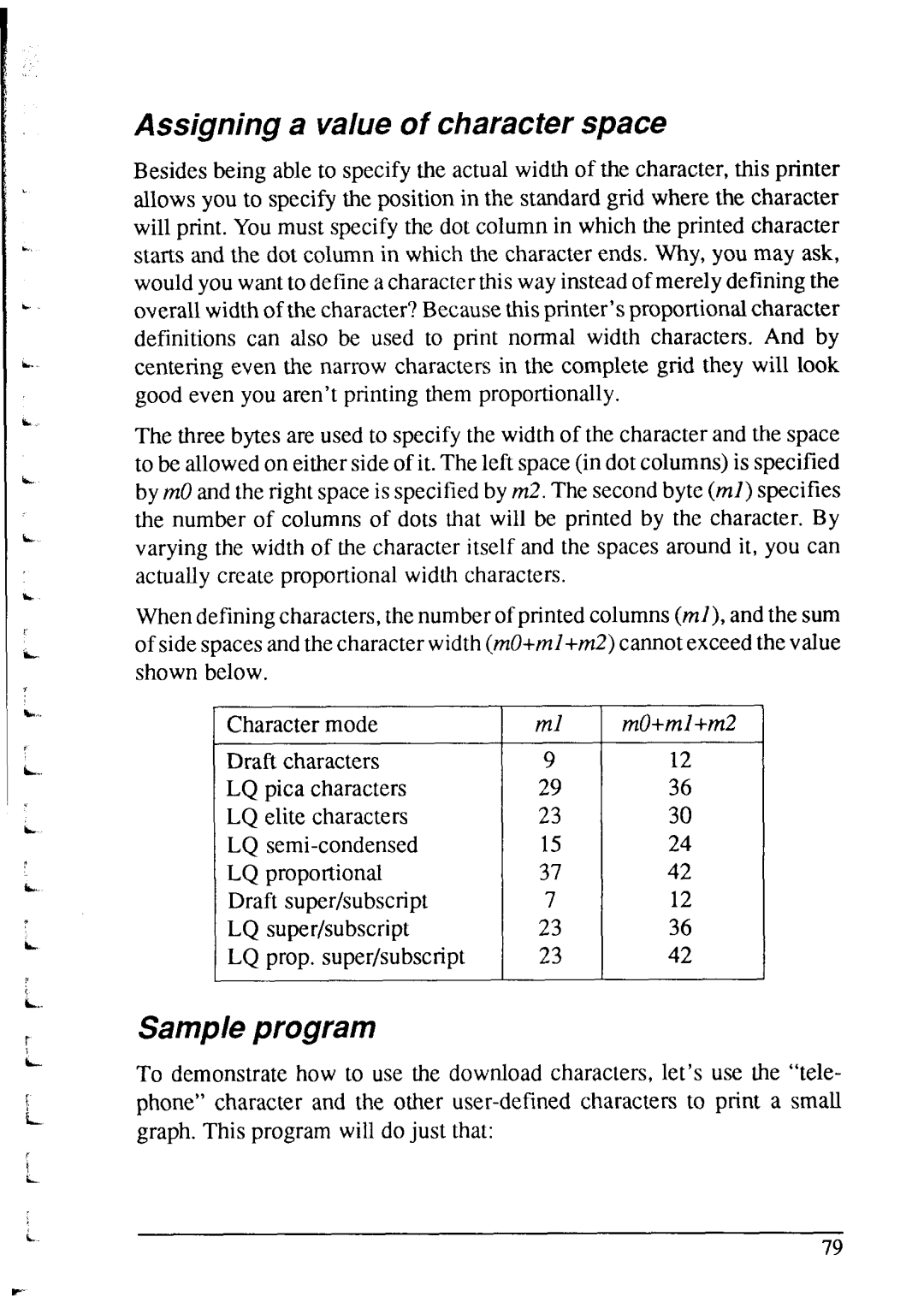
L..
L
b..
t .
Assigning a value of character space
Besides being able to specify the actual width of the character, this printer allows you to specify the position in the standard grid where the character will print. You must specify the dot column in which the printed character starts and the dot column in which the character ends. Why, you may ask, would you want to define a character this way instead of merely defining the overall width of the character? Because this printer’s proportional character definitions can also be used to print normal width characters. And by centering even the narrow characters in the complete grid they will look good even you aren’t printing them proportionally.
The three bytes are used to specify the width of the character and the space to be allowed on either side of it. The left space (in dot columns) is specified by mOand the right space is specified by m2. The second byte (ml) specifies the number of columns of dots that will be printed by the character. By varying the width of the character itself and the spaces around it, you can actually create proportional width characters.
When defining characters, the number of printed columns (ml), and the sum of side spaces and the character width (mO+mZ+m2)cannot exceed the value shown below.
Character mode | ml | mO+ml+m2 |
Draft characters | 9 | 12 |
LQ pica characters | 29 | 36 |
LQ elite characters | 23 | 30 |
LQ | 1.5 | 24 |
LQ proportional | 37 | 42 |
Draft super/subscript | 7 | 12 |
LQ super/subscript | 23 | 36 |
LQ prop. super/subscript | 23 | 42 |
Sample program
To demonstrate how to use the download characters, let’s use the “tele- phone” character and the other
79
